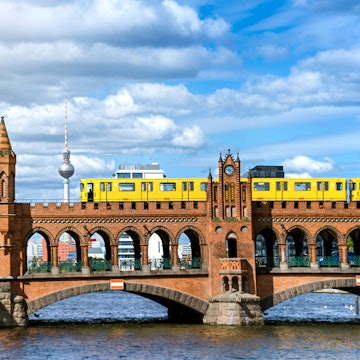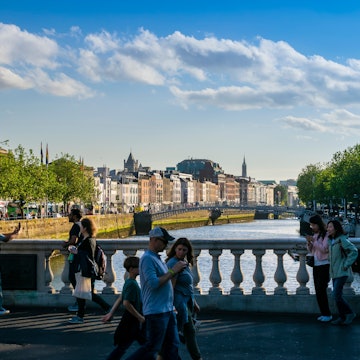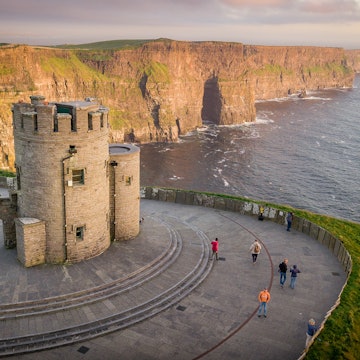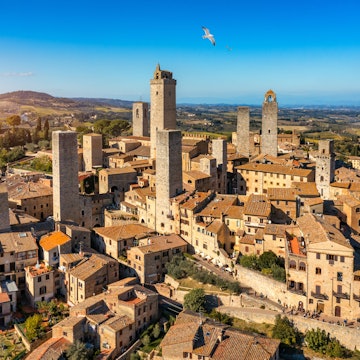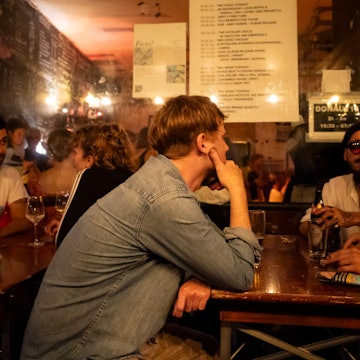

Cour Damoye in Paris, France. Amir Hamja for Lonely Planet
There is simply no way you could tour Europe and not be awestruck by its natural beauty, fascinating history, rich culture, fabulous food, world-changing art and dazzling diversity. From sun-kissed islands to historic villages, there's always somewhere new to discover.
Europe’s wealth of attractions is its biggest single draw. Who hasn't dreamed of seeing Florence’s Renaissance art, Venice’s graceful canals, Paris’ Napoleonic splendor, and the multilayered historical and cultural canvas of London?
Outdoors types will find no shortage of stunning places in Europe to visit – the continent is blessed with a dizzying diversity of natural scenery, from rugged Scottish Highlands dotted with glens and lochs and the snow-capped mountains of the Alps to the flower fields and hilltop villages of Provence and the island-speckled coastlines of the Adriatic and Aegean. And those are just a few of the highlights.
Some of Europe's most popular spots have felt the effects of tourism in recent years, as increasing visitor numbers have impacted local populations, services and historic sites. But with some smart decision-making and forward planning, you’re in for the journey of a lifetime. If you’re searching for the best places to visit in Europe, these iconic cities and secret corners deliver timeless beauty and fresh surprises for 2026.

1. Paris, France
Best for iconic moments
Designed as a temporary exhibit for the 1889 Exposition Universelle (World Fair), the elegant, iconic Eiffel Tower has become the defining fixture of the Paris skyline and many a photographic moment, although the dramatic Louvre heist definitely attracted the most attention in 2025. From legendary culinary offerings and alluring nightlife to a seemingly endless selection of museums, galleries and flea markets, it’s hard to imagine a city more iconic than the City of Light.
Detour: After spend your days wandering through the city’s 20 intriguing arrondissements (districts), head further afield on a day trip to Monet’s garden at Giverny or Marie Antoinette’s former home at Versailles.

2. Athens, Greece
Best for monuments
Greece has ancient monuments at seemingly every turn, but it’s in Athens where this ancient empire's greatest and most iconic monuments stand proud. High on a rocky outcrop overlooking the city, the Acropolis epitomizes the glory of ancient Greece, with its graceful Parthenon and 17,000-seat Theatre of Dionysos. Other impressive ruins littering this vibrant city include the Temple of Olympian Zeus and two agoras (marketplaces) – one Greek, one Roman – mingling with first-rate museums.
When you’ve had your fill of architectural magnificence, fill up on Athens’ culinary brilliance, sampling local delights such as lukumades (crisp dough balls) and souvlaki kebabs. The city is also flush with great beaches, and pine-covered islands, atmospheric ancient sites and rugged hiking trails are only a day trip away. Just be alert to the heat – recent years have seen soaring summer temperatures linked to climate change, leading to closures at major sights.

3. Rome, Italy
Best for ancient ruins
From the crumbling Colosseum to the ancient Forum and the timeless Via Appia Antica, few sights are more evocative than the ruins of ancient Rome. Two thousand years ago, this city was the center of the greatest empire of the ancient world, where gladiators battled and emperors lived in unimaginable luxury. Nowadays, its ancient sites have a haunting mystery; as you walk the cobbled paths, you can almost sense the ghosts in the air.
But don’t miss the city’s contemporary side. Shop for hip handbags or handmade jewelry in Rome’s coolest independent boutiques. Rub shoulders with locals over aperitivo (pre-meal drinks) at trendy bars or check out the street art in neighborhoods such as Ostiense and San Lorenzo. In a city that’s been around for thousands of years, there are always plenty of new treasures to find.

4. Stockholm, Sweden
Best for edgy creativity
Beautiful capital cities are no rarity in Europe, but Stockholm comes near the top of the list for sheer wow factor. Straddling 14 islands where the Baltic meets Lake Mälaren, this shiny Nordic star seems to have it all – edgy creativity, engrossing history, inner-city woodlands and waterways clean enough for a bracing dip in summer.
From its storybook Old Town (Gamla Stan) to its famously progressive design, fashion and culinary scenes, the city offers a crash course in style and taste. Across the city, world-class museums and galleries inform and provoke, serving up everything from glittering Viking treasures and an ill-fated warship, to ABBA props and subversive contemporary art.
The result is a stimulating, inspiring hub, where the past, present and future constantly merge, converse and interplay. Winter brings a special fairytale magic to Stockholm, as the gingerbread-like buildings are dusted with snow.

5. Copenhagen, Denmark
Best design scene
Scandinavia is all about pared-back contemporary style – something that the Danish capital has in spades. Home to a thriving design scene, Copenhagen has Michelin-starred restaurants, hipster cafes and bars and swoon-worthy boutiques around every corner. Add in top-class museums and galleries and a 1000-year-old harbor with handsome historic architecture, and you have the perfect Scandi city break.
Planning tip: While Copenhagen is known for being expensive, there are ways to budget for your trip and plenty of free things to do in the city. Strolling around and soaking up the atmosphere won't cost you a Danish krone.
6. Berlin, Germany
Best for club culture
Nearly 35 years since the fall of the Berlin Wall, it’s hard to believe that this most cosmopolitan of cities once marked one of the key frontiers in the Cold War. But reminders of Berlin's divided past remain. Whether you’re passing the Brandenburg Gate, gazing at graffiti-covered sections of the old Berlin Wall at East Side Gallery or studying the exhibits at the DDR Museum, it’s an essential part of understanding the forces that have shaped Germany’s capital. From the past to the future – be sure to soak up the city's amazing modern touches, like its iconic club culture, unique independent shops and cool neighborhoods.
7. Tallinn, Estonia
Best for a seamless experience
Tallinn is lively yet peaceful, absurdly photogenic and bursting with wonderful sights – including exquisite ancient churches, medieval streetscapes and noble merchants’ houses. Throw in delightful food and vibrant modern culture, and it’s no wonder Tallinn sometimes seems in danger of being loved to death, especially when the cruise ships dock.
But this is one of those blessed places that seems to cope with all the attention. Tallinn safeguards the fairy-tale charms of its UNESCO-listed Old Town – despite some exuberant post-Soviet development, the city clearly realizes it’s better to be classy than brassy. Hence the blossoming of first-rate restaurants and atmospheric hotels – and a well-oiled tourist machine makes visiting a breeze.

8. Vienna, Austria
Best for imperial architecture
The monumentally graceful Hofburg Palace whisks you back to the age of empires in Vienna. You can marvel at the treasury’s imperial crowns, the equine ballet of the Spanish Riding School and chandelier-lit apartments once occupied by Emperor Franz Joseph I and Empress Elisabeth. The palace, a legacy of the 640-year-long Habsburg Empire, is rivaled in grandeur only by the 1441-room Schloss Schönbrunn, a UNESCO World Heritage Site, and the baroque Schloss Belvedere, both set in exquisite gardens.
Planning tip: You can enter the Schloss Schönbrunn park free of charge during opening hours, but if you want to visit attractions such as the Privy Garden, the maze or the zoo, you need to purchase individual admission tickets. Book online ahead of your visit.
9. Dubrovnik, Croatia
Best for wandering the old town
Dubrovnik's main claim to fame is its historic city wall, considered among the grandest in the world, which surrounds luminous marble streets and finely ornamented buildings. Built between the 13th and 16th centuries, the walls are still remarkably intact, and the vistas over the terracotta rooftops and the Adriatic Sea are sublime, especially at dusk, when the fading light makes the hues dramatic and the panoramas unforgettable.
The city’s prominent role in the TV series Game of Thrones caused a massive surge in visitors – and in the number of tours taking people to all the starring spots. But travelers can still get to know the real Dubrovnik by diving deeper into its top attractions and wandering outside of the Old Town.

10. Amsterdam, Netherlands
Best for getting out on the water
To say residents of Amsterdam love the water is an understatement. Take a stroll beside the canals and check out the thousands of houseboats, or take a canal boat ride, and you'll soon understand why. From the water, you’ll notice a whole new set of architectural details, such as the ornamentation bedecking the city's famous bridges. Each time you pass an appealing canalside cafe terrace, mark the location for a later return.
Getting around in Amsterdam is a breeze, making it an ideal city for exploring hip neighborhoods in search of the best things to eat and drink. While there's always plenty to do in Amsterdam, sometimes the best experiences come from slowing down, skipping the tourist sights, and soaking up the city vibe.
Planning tip: Behind Amsterdam Centraal Station, Amsterdam's ferries offer crossings over the River IJ to Amsterdam Noord for pedestrians and cyclists for free.
11. Budapest, Hungary
Best for soaking in thermal baths
Along both sides of the romantic Danube River, with the Buda Hills to the west and the start of the Great Plain to the east, Budapest is perhaps the most beautiful city in Eastern Europe. Parks brim with attractions, the architecture is second to none, museums are filled with treasures, pleasure boats sail up and down the scenic Danube Bend, Baroque and Turkish-era thermal baths billow steam, and the city's famous ruin bars and nightclubs throb till dawn.
Detour: Once you've had your fill, head out on a day trip from Budapest for lake swimming or a Habsburg-era Gödöllő Royal Palace, and more.

12. Barcelona, Spain
Best for Modernista architecture and tapas
Barcelona is renowned for its Modernista architecture, featuring the iconic buildings of Antoni Gaudí. His masterpiece is the mighty cathedral La Sagrada Família, which remains a work in progress close to a century after its creator’s death. It’s a bizarre combination of crazy and classic – Gothic touches intersect with eccentric experimental flourishes and improbable angles. Even half-completed, it’s a modern-day wonder.
Of course, there's much more to the Catalan capital than its most famous church. Barcelona heaves with tapas restaurants, art museums and history-steeped neighborhoods – not to mention its incredible beaches.
Planning tip: Barcelona has been in the spotlight due to the high visitor numbers and the impact on local communities, so make sure you understand the issues before you go.

13. Lisbon, Portugal
Best for losing your sense of direction
The district of Alfama, with its labyrinthine alleyways, hidden courtyards and curving, shadow-filled lanes, is a magical place to lose all sense of direction and delve into Lisbon's soul. On the journey, you’ll pass breadbox-sized grocers, brilliantly tiled buildings and views of steeply pitched rooftops leading down to the glittering Tagus River. Pause at cozy taverns filled with easygoing chatter, with the scent of chargrilled sardines and the mournful rhythms of fado drifting in the breeze, and toast the city with a glass of Portugal's famous port wine.

14. London, UK
Best for cool neighborhoods
London is mercurial and endlessly fascinating. You could spend a lifetime getting to know it, then realize the city has gone and changed again. Stretching back from the mighty River Thames, its lush parks and historic districts are crammed with extraordinary sights – from royal palaces and towering cathedrals to remarkable museums and galleries. Add some of the world’s top theaters, restaurants, sports venues and shops, and you’ll be very reluctant to leave.
Travelers who want to dive deeper into London will be rewarded by exploring its varied and characterful neighborhoods, taking in the cool clubs of Shoreditch or the picturesque streets of Notting Hill.
Detour: With more time, tack on a day trip to explore nature in the New Forest, admire the Roman ruins of Bath or soak up the creativity of Bristol.

15. Lake Bled, Slovenia
Best for picture-perfect views and lake swimming
With its sky-blue lake, picture-postcard church on a tiny island, a fairy-tale medieval castle clinging to a rocky cliff and some of the country’s highest peaks as backdrops, Lake Bled seems to have been designed by the very god of tourism. But Slovenia's biggest draw is more than just a pretty face. There’s a lively cultural calendar during the summer months, including the classical music-focused Bled Festival. And there’s a thriving adventure scene with swimming, hiking, cycling, fishing, rafting and canyoning to keep you busy for days.
Planning tip: The public swimming areas are excellent, and there are a couple of private beaches, too, including a refined one at the Grand Hotel Toplice.
16. Dublin, Ireland
Best for literature lovers
Whether you’re wandering around the leafy Georgian terraces of St Stephen’s Green or getting acquainted with the past at Kilmainham Gaol or Trinity College, you’re never far from a literary or historic sight in Dublin. Then there are the city’s pubs: there are few better places to down a pint than Dublin. You can even make a pilgrimage to the original Guinness brewery. Either way, you’ll surely make a few local friends along the way.

17. Venice, Italy
Best for off-season travel
A bright winter’s day, with crisp sunshine and far fewer tourists around, is the perfect time to lap up Venice's unique and magical atmosphere. Ditch your map and wander the shadowy back lanes of Dorsoduro while imagining secret assignations and whispered conspiracies at every turn. Then visit two of Venice’s top galleries, the Gallerie dell’Accademia and the Peggy Guggenheim Collection, which house works by many giants of Italian and European art.
Planning tip: In recent years, Venice has struggled under the pressures of mass tourism, and visitors should brush up on how to be mindful while traveling in this gorgeous but fragile city. An entry fee for day-trippers may inspire people to stay longer, which is one way to get a deeper understanding of this incredible city.
18. Transylvania, Romania
Best for a bucket-list road trip
When the twisting, turning, high-altitude Transfăgărăşan road in southern Transylvania was built in the 1970s, it was derided as a vanity project for the Ceauşescu regime. Who could have imagined that a generation later, it would be celebrated as one of the world's most exciting roads to drive. Boldly charging up and down Romania’s Făgăraş Mountains. The journey peaks at 2034m, providing an unforgettable, white-knuckle experience behind the wheel. The climax is glacial Lake Bâlea, hovering like a mirror among the rocks; sometimes it is totally enshrouded by clouds.
Planning tip: The road is closed for winter by October; plan your trip for between June and September.

19. Florence and Tuscany, Italy
Best for foodies
The undulating hills of Tuscany, bathed in golden light and dotted with vineyards, sum up Italy’s attractions in a nutshell. Here, picture-perfect hilltop towns vie with magnificent scenery and some of Italy’s best food and wine. Experiencing Tuscany for the first time is one of Europe's great pleasures. Seek out the famed vintages of Chianti and stroll the evocative main square of historic Siena.
Then there’s Florence – aah, Firenze! – home to what UNESCO describes as "the greatest concentration of universally renowned works of art in the world." The Tuscan capital is packed with blockbuster museums, elegant churches and flawless Renaissance streetscapes.
Planning tip: Naturally, a city this iconic also draws a crowd, so make sure you plan your trip around the best times to visit.
20. Bruges, Belgium
Best for cobbled lanes and dreamy canals
If you set out to design a fairy-tale medieval town, it would be hard to improve on central Bruges (Brugge in Dutch). Picturesque cobbled lanes and dreamy canals link photogenic squares lined with soaring towers, historical churches and photogenic whitewashed almshouses.
Of course, the secret is out – during the busy summer months, you’ll be sharing Bruges's cobbled streets and beer houses with a constant stream of fellow tourists. If you can stand the cold, come midweek in the depths of winter (except at Christmas time) to avoid the crowds. And do stay overnight to enjoy the views at night, when the city is lit up by atmospheric floodlighting.

21. Andalucía, Spain
Best for Moorish influence
Andalucía – al-Andalus in Moorish times – is awash with glorious architecture spanning eight centuries of Islamic rule in Spain and all the centuries since. Granada, Córdoba and Seville are the high points of a journey of extraordinary riches. In Granada, the palace complex of the Alhambra comes close to perfection, and is perhaps one of the most impressive works of Islamic architecture anywhere in the world. For many, this is Spain’s signature monument.
22. Bulgaria's mountains
Best for wilderness and hot springs
Dominated by forest and interlaced by seven mountain ranges, Bulgaria allows wildlife lovers a glimpse of primeval Europe. Predators such as bears, lynx and wolves still stalk these wilds, although they are very elusive. Easier to spot are Bulgaria's hundreds of bird species, including raptors. Bulgaria's mountainous areas are relatively undeveloped (aside from thriving ski hubs like Borovets and Bansko), making a vast untamed wilderness within easy reach of the capital. Hiking, biking and rock climbing are all popular outdoor pursuits, with numerous trails in the spellbinding Balkan Mountains and national parks such as Pirin and Rila.
Detour: After all that cycling, skiing and hiking, you can soothe your muscles in nerve-ticklingly warm water at natural thermal pools and spas.

23. Reykjavík, Iceland
Best for a cool-cation
More than half of the population of Iceland live in Reykjavík – a city smaller than Anchorage, Alaska – but even on the shortest visit you’ll be struck by the quirky character and creativity of the population.
Despite being on the northern margins of Europe, on an island sculpted by volcanoes and ice, locals have forged a city packed with captivating art, rich cuisine and energetic nightlife, hosting an epic music scene. Learn about a history stretching back to Viking times and use the city as a base for trips to Iceland’s amazing natural wonders.
24. Lapland, Finland
Best for the northern lights and Indigenous culture
Lapland casts a powerful spell – something intangible fills this land of islands and forests with Arctic magic. The midnight sun, the Sámi peoples, the aurora borealis (northern lights) and roaming reindeer are all components of Finland's special charm. Then there's Santa Claus himself, who "officially" resides here, close to the northern town of Rovaniemi, the most popular gateway to the north. The sense of space, pure air and big skies are the memorable features here. Lapland’s far north is known as Sápmi, home of the Sámi, and the main communities of the region's Indigenous population are found around Inari, Utsjoki and Hetta.

25. Provence, France
Best for dreamy, rustic living
For many people, the pastoral landscapes of Provence are a French fantasy brought to life. Provence seems to sum up everything enviable about the French lifestyle: fantastic food, legendary wines, bustling markets and long, balmy evenings, perfect for enjoying the good life. For decades, the villages of Provence have been hot spots for vacationers and second-homers, inspired by a dreamy vision of rustic living.
Seek out the postcard-perfect view of lavender fields and medieval cloisters at the Abbaye Notre-Dame de Sénanque or grab an espresso among the students hanging out in Aix-en-Provence. Whatever you do, eating, drinking and living well will surely be on the menu.
26. Ruins of Pompeii, Italy
Best for time travel
Frozen in its death throes, the sprawling, time-warped ruins of Pompeii near Naples hurtle visitors 2000 years into the past. Wander through chariot-grooved Roman streets and duck into lavishly frescoed villas and bathhouses, food stores and markets, theaters and even an ancient brothel. Then, in the eerie stillness, with your eye on the ominous profile of Mt Vesuvius, ponder the town’s final hours when the skies grew dark with choking volcanic ash. One of the most intriguing experiences in this ancient city is investigating the ongoing excavations, which continue to shed new light on life in 79 CE.

27. The Scottish Highlands
Best for a wide-open vistas
Whether you explore on foot, by rail, or on a thrilling road trip, breathtaking views abound in the Scottish Highlands. From the regal charm of Royal Deeside to the brooding majesty of Glen Coe and the mysterious waters of sweeping Loch Ness, these are landscapes that inspire awe. The region is scattered with fairy-tale castles, and the hiking is suitably glorious. Add in the Highland hospitality found in classic rural pubs and romantic country hotels, and you're guaranteed to forge memories in this unforgettable corner of Scotland.
28. Swiss Alps, Switzerland
Best for mountains and hikes and hiking in the mountains
The stirring ramparts of the Swiss Alps grace chocolate bar wrappers and muesli packets, but nothing prepares you for the magic of seeing these mountains up close. The most famous summit, the Matterhorn, is a mesmerizing wedge of rock and ice that looms above the timber-chalet-filled village of Zermatt. Gaze at it from a tranquil cafe, hike in its shadow along the tangle of alpine paths above town with cowbells clinking in the distance, or pause on a ski slope and admire its craggy, chiseled outline.

29. Schloss Neuschwanstein, Germany
Best for living out a fairytale dream
Rising from Alpine foothills in the heart of Bavaria in southeastern Germany, the 19th-century Schloss Neuschwanstein seems to spring from a child’s dream of a fairytale castle. Its pencil-thin turrets, vertiginous walls and glorious setting make it one of Europe’s most recognizable structures – indeed, it was the prototype for the castle in Disney's Cinderella. Rising near Füssen, the castle is at the southern end of the Romantic Road, making it the perfect stop on a beautiful German road trip.
30. Greek Islands, Greece
Best for island hopping
Wherever you make landfall, the Greek Islands grab your attention and don’t let go. Whether you crave beaches, warm seas, history or nightlife, it's easy to find your own island in the sun. It's fair to say that popular islands such as Santorini and Mykonos have suffered under the weight of overtourism, but there are plenty of isles to explore that offer more off-the-beaten-path experiences. Try exploring the lush Ionian Islands or the far-flung Dodecanese. Whichever sun-warmed island you choose, you're in for an incredible experience. Take time to plan the perfect island-hopping adventure and narrow down the islands that are right for you.
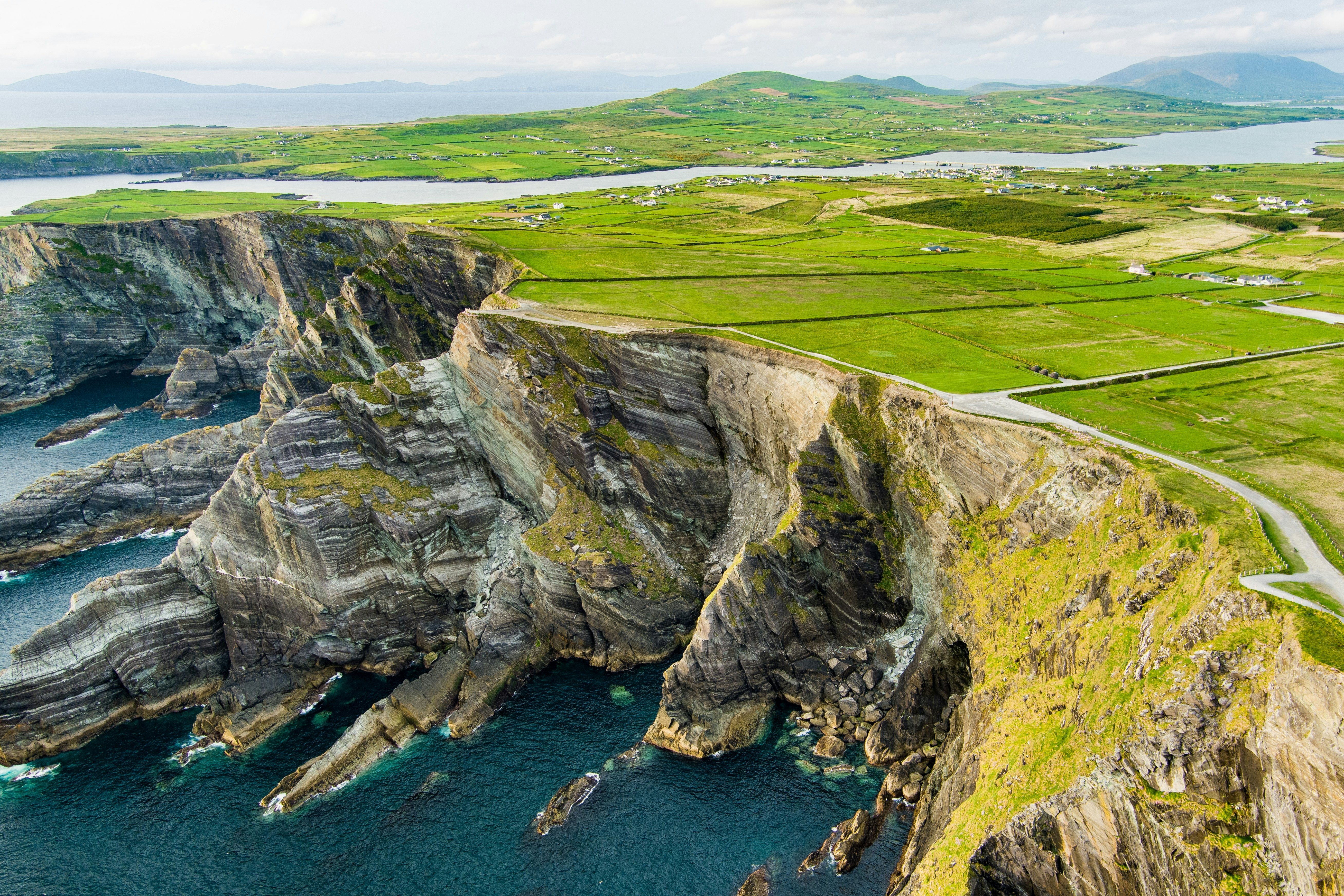
31. Ring of Kerry, Ireland
Best for wild landscapes
There’s nowhere quite like Ireland – and even within Ireland, there's nowhere quite like the Ring of Kerry. This 179km (111-mile) driving route around the Iveragh Peninsula (it's pronounced eev-raa) captures all the essential elements of the Republic of Ireland on one memorable circuit (drive it over 2 to 3 days). Wild and craggy landscapes frame isolated beaches, evocative ruined fortresses stand sentinel over wave-tossed Atlantic seas, and windswept mountains watch over villages and islands that could be nowhere else on earth but Ireland.
Detour: The route takes you near Ireland’s highest mountain, Carrauntoohil. Add an extra day to your itinerary to hike it via the Devil’s Ladder.
32. Prague, Czechia
Best for castles
The capital of Czechia (formerly the Czech Republic), Prague is one of Europe’s most alluring and dynamic cities. For all its modern verve, some parts of town have hardly changed since medieval times. Cobbled cul-de-sacs twist and turn, framed by teetering townhouses, baroque buildings and graceful bridges.
If castles are your thing, Prague has an absolute beauty: a 1000-year-old fortress covering around 7 hectares (17 acres) – the world’s largest ancient castle complex. The Old Town is where you’ll find many of Prague’s quintessential attractions, but you’ll be rewarded for exploring other intriguing neighborhoods – which also happen to be where you’ll find many of the city's best restaurants.
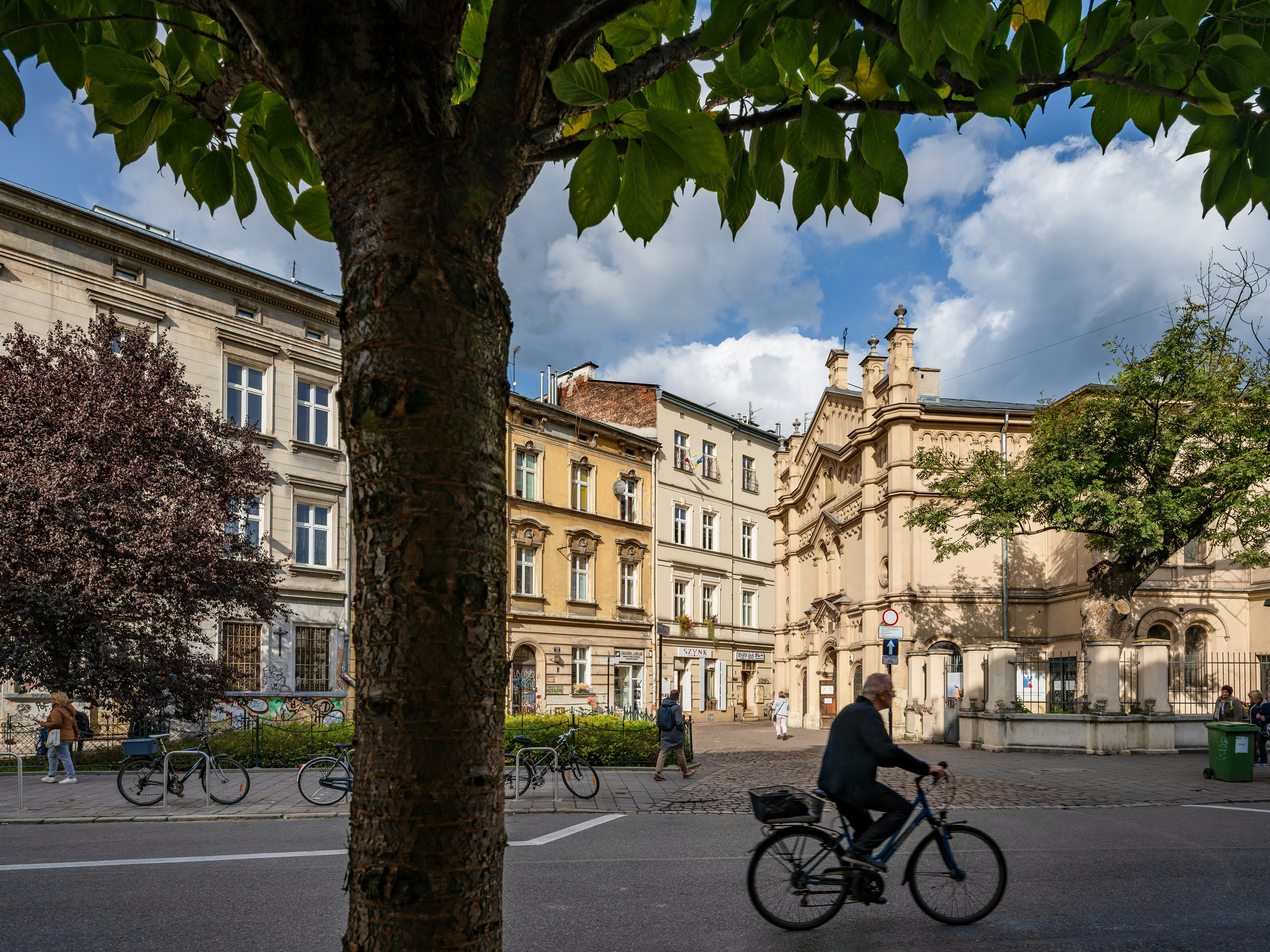
33. Kraków, Poland
Best for the intelligencia
Kraków is the most quintessentially Polish of cities, a place steeped in legends of dragons and kings. Where else will you find a fairy-tale castle, Europe’s largest medieval market square and Jagiellonian University – one of Europe’s oldest centers of learning – sitting alongside multiple museums and galleries displaying priceless art and artifacts?
Complementing all this is the world’s highest density of bars and clubs, cuisines spanning the globe, cellar bars playing live jazz and serving ice-cold vodka, beer gardens pouring local brews and architecture to rival other European capitals. All of the great architectural styles – Romanesque, Gothic, Renaissance, baroque and art nouveau – are represented here, all thanks to Kraków surviving WWII largely intact. Whatever your passion – whether you’re an opera lover, a jazz aficionado, a gourmet or a beer buff – you’ll find it here.
34. Oslo, Norway
Best for contemporary style
Oslo is doing everything it can to claim the prize as Europe’s capital of contemporary style, despite facing strong competition from nearby Copenhagen and other Nordic hubs. Oslo's angular Opera House evokes an iceberg in a fjord, public art is a national pastime, and the city’s extraordinary museums span the Viking age to Norway's modern state of contented enlightenment. It's a city to appreciate for its many merits, not merely a stopover on the road to the fjords.
Planning tip: Oslo is famously expensive, especially when it comes to eating out, but with some careful planning, you can see more for less.

When is the best time to visit Europe?
Europe is a big place, spanning many different kinds of terrain – the best time to visit will vary based on the countries you want to see, and your tolerance for heat, cold, and crowds.
Some countries and cities are popular year-round (Rome, for example). For any must-see attractions, theatre shows, festivals, or top dining destinations, it's best to prebook these as soon as you know your travel dates to avoid disappointment, no matter what the season.
Summer (June–August)
Don't miss: Scottish Highlands, Scandinavia road trips, island hopping in the Mediterranean
July and August are undoubtedly the busiest months in Europe, particularly in the most visited countries such as France, Italy, Spain and Greece. In recent years, some Mediterranean regions have faced extreme heat and wildfires in the summer months, with popular attractions such as the Acropolis in Athens closing in the middle of the day due to dangerously high temperatures. While cities like Paris and Rome can empty in August as locals leave on their own summer vacations. Summer can be a great time to visit some of Europe’s cooler, northern regions, such as Scandinavia, where long days and warm temperatures make this a great time for outdoor pursuits.
Autumn (September–November)
Don't miss: Festes de la Mercè (Spain), Halloween/Samhain (Ireland), Guy Fawkes (England)
In early autumn, it’s a good time to soak up the end of summer – without the crowds – in Italy, Greece and the French Riviera as families return home for the new school year. September and October also bring harvest festivals to wine regions, foraging in forests and road trips through changing colors. Weather can be unpredictable, though, and even cold in northern Europe. There are plenty of festivals and events across Europe – from Oktoberfest in Germany to Mabon in Ireland, plus Halloween, All Souls Day and Guy Fawkes – to mark the march toward longer nights.
Winter (December–February)
Don't miss: Skiing in the Alps, Lapland, Christmas markets
Despite freezing temperatures, this is a magical time to visit Europe, with Christmas decorations brightening the dark streets. During the winter months, ski resorts throughout the Alps and other European mountain ranges flood with alpine enthusiasts. Shoppers crowd Christmas markets in major cities. For a dose of winter sun, many European travelers look to sun-warmed islands in the south, such as the Balearics, the Canaries and Malta.
Spring (March–May)
Don't miss: The Netherlands for tulips, Andalusian festivals, Orthodox Easter
Spring arrives with a burst of color, from the glorious bulb fields of Holland to the blooming orchards of Spain. On the most southern beaches, it’s time to shake the sand out of the umbrellas. Spring is the perfect time to visit Europe, but school holidays and Easter vacations can bring crowds and some disruptions. On the whole, the crowds and prices are smaller than in the height of summer.
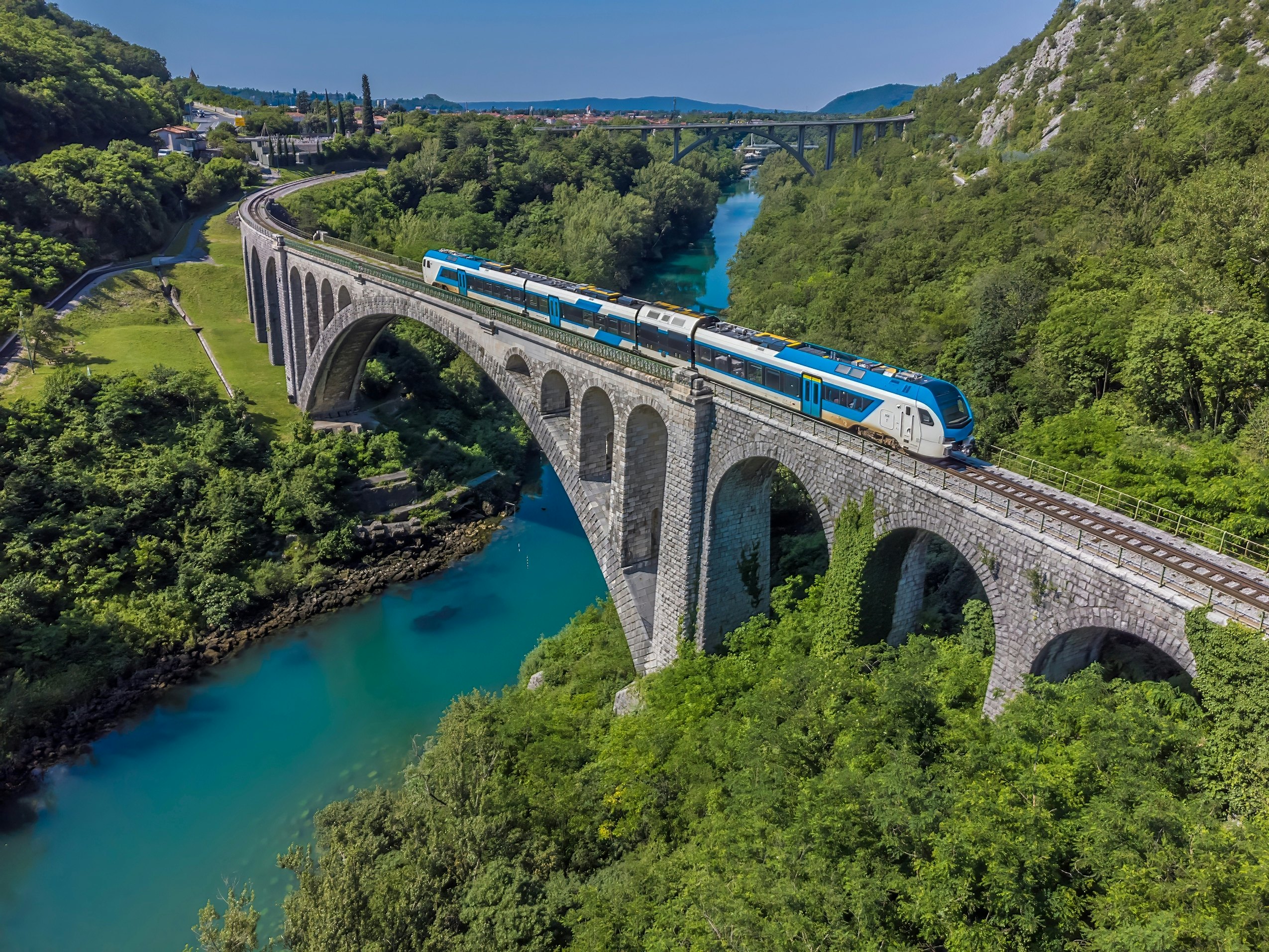
Do I need a visa to visit Europe?
With its many land borders, Europe was made for country-hopping – just ask the generations of backpackers and Interrailers who have meandered across it by road, rail and bicycle.
Non-EU travelers with a Schengen Visa will be able to visit multiple European nations, but only for a maximum of 90 days within any 180-day period. You must be traveling as a tourist and have at least six months' validity left on your passport. If you're lucky enough to have a passport from a European Union country, you can travel freely across Europe with few restrictions.
What's the best way to get around Europe?
Continental Europe is well-connected by rail, and a resurgence of night trains is making it even easier to get around without the carbon footprint of flying. Travelers can also take the Eurostar train from continental Europe to Britain, which is much less hassle than traveling by plane. How much of Europe you can see in one trip comes down to how much time you have and how packed you want your itinerary to be.








